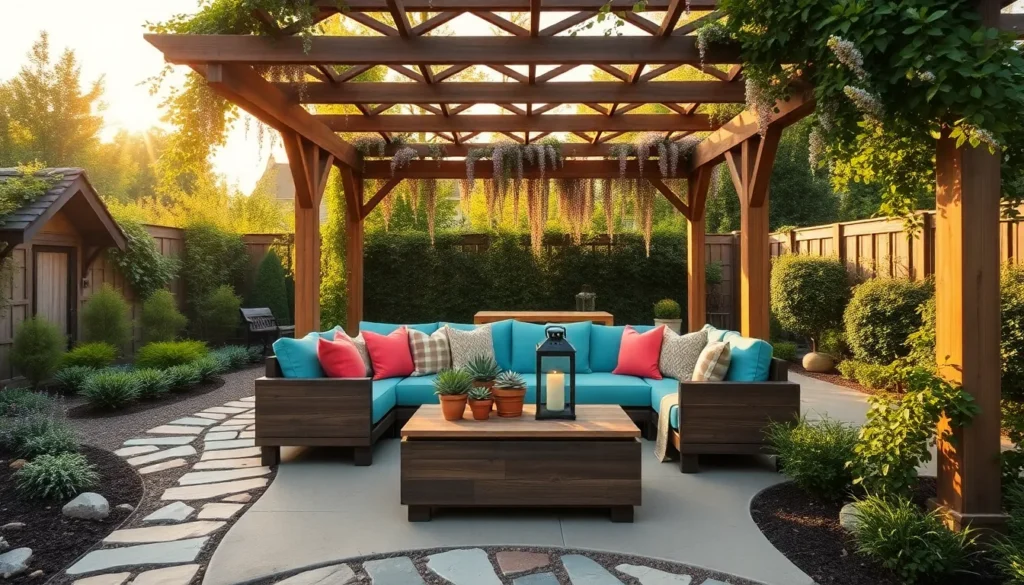Imagine stepping into a backyard oasis where every corner whispers tranquility and invites relaxation—a space that reflects your personal style and enhances the natural beauty of your home. Whether you’re just beginning your journey into outdoor design or you’re a seasoned pro, our guide to “8 Pergola Landscaping Ideas to Surround Your Outdoor Space” offers a treasure trove of inspiration and practical tips to elevate your outdoor environment.
From creating cozy nooks to hosting vibrant gatherings, pergolas are more than just structures; they’re the heart of outdoor living that blend functionality with aesthetic charm. By exploring these ideas, you’ll gain the confidence to transform your space into a haven of joy and serenity, ensuring delightful moments under a beautifully crafted pergola.
Incorporate Climbing Vines for Shade
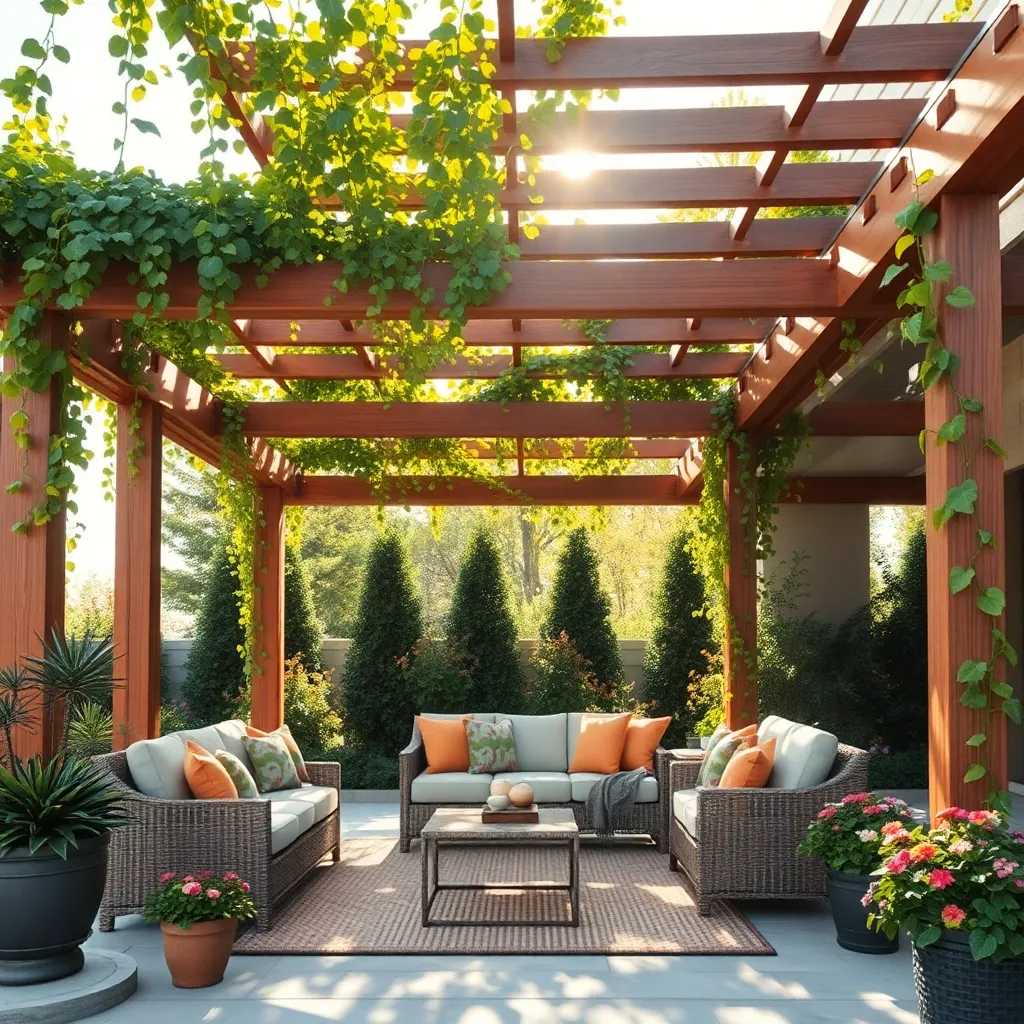
Integrating climbing vines into your pergola design not only enhances its aesthetic appeal but also provides natural shade. Beginners can start with easy-to-grow varieties like clematis or honeysuckle, which offer vibrant colors and delightful fragrances. For a more advanced approach, consider using grapevines or wisteria, which require sturdier structures due to their weight. Ensure your pergola is built with durable materials like cedar or aluminum to support the lush greenery and withstand varying weather conditions.
When designing your pergola, space the support beams about 12 to 18 inches apart to give your vines plenty of room to climb. Use twine or wire guides to train the vines as they grow, ensuring even coverage and optimum shade. Regular pruning and maintenance will help promote healthy growth and prevent overgrowth, keeping your outdoor space inviting and comfortable. Consider adding a drip irrigation system to ensure consistent watering, especially during hot summer months, to keep your climbing vines thriving.
Plant Flowering Borders Around Pergola
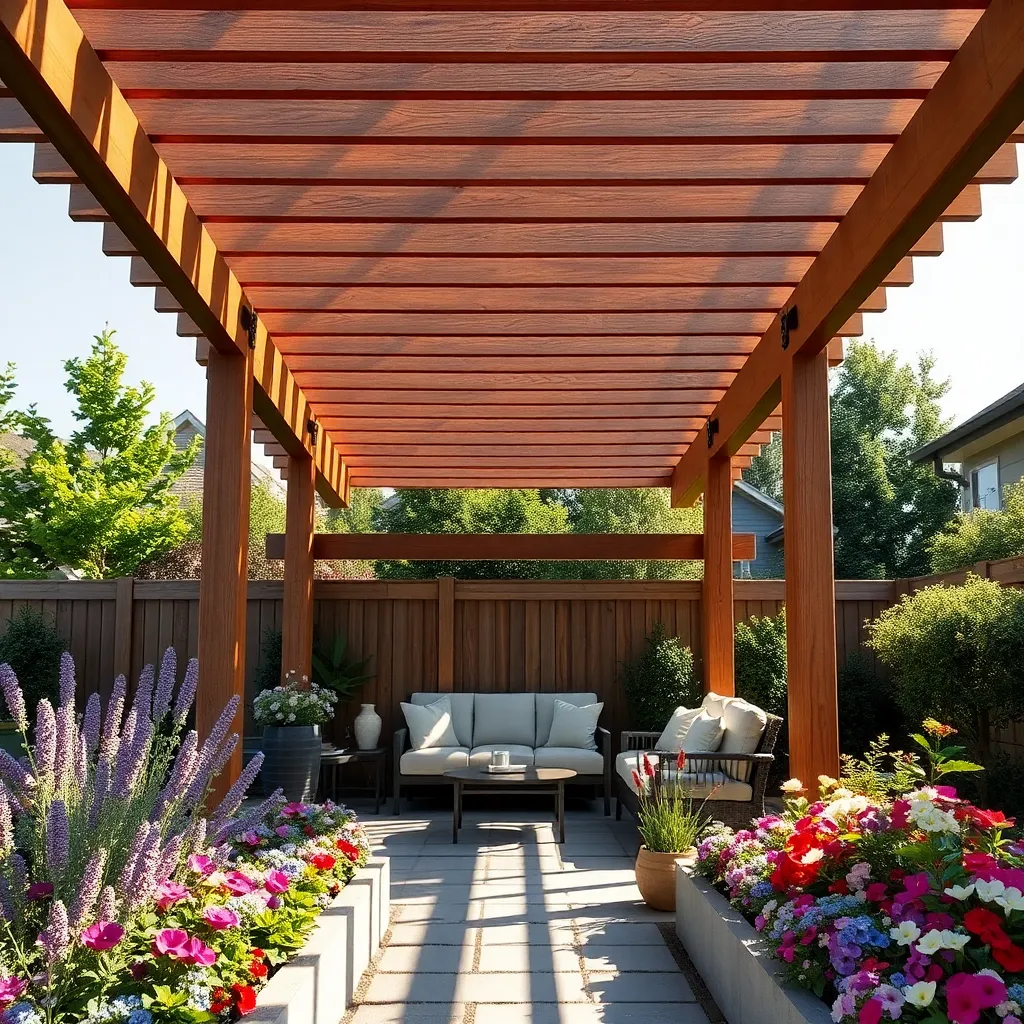
To create a visually stunning and inviting pergola area, consider planting flowering borders around its perimeter. Select a variety of perennial and annual flowers that bloom at different times throughout the year to ensure continuous bursts of color. Consider hardy options like lavender or coneflowers that thrive in most climates. Space plants about 12-18 inches apart to allow for growth and to prevent crowding, which can lead to diseases.
Enhance your design by incorporating varying heights and textures to add depth and interest.
- Place taller plants, such as delphiniums or hollyhocks, at the back to frame your pergola.
- In the middle, use medium-height flowers like daisies or coreopsis.
- Finally, edge the border with low-growing plants like alyssum or creeping thyme for a polished look.
For those with more gardening experience, consider integrating ornamental grasses or shrubs for added dimension and year-round structure. This layered approach creates a lush, inviting border that enhances the overall aesthetic of your outdoor space.
Add Privacy with Tall Shrubs
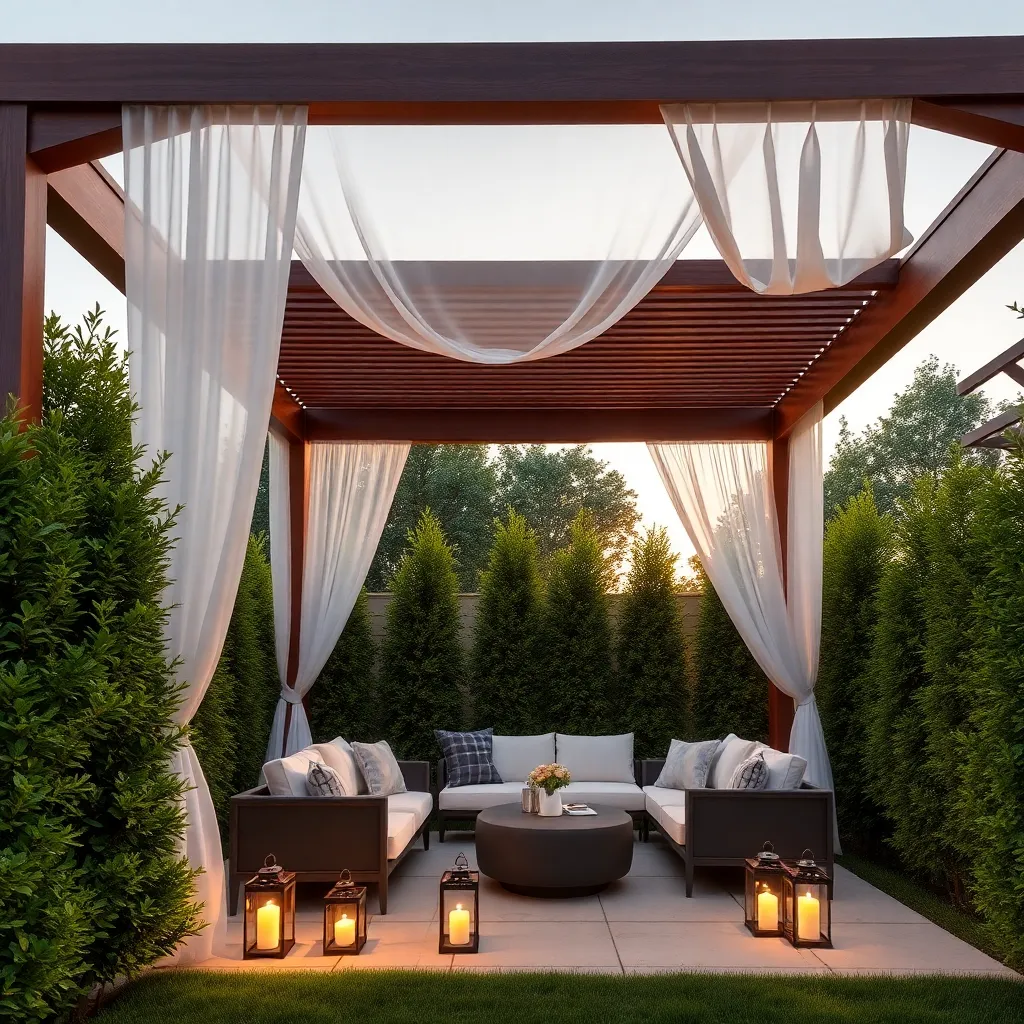
To add privacy and a touch of greenery around your pergola, consider planting tall shrubs. Choose evergreen varieties like arborvitae or privet to ensure year-round coverage. These shrubs can be strategically placed at the perimeter of your pergola to create a natural screen. For a more structured look, plant them in a linear fashion, spacing them approximately 3 to 4 feet apart to allow for growth and full coverage.
Incorporating tall shrubs not only provides privacy but also adds a lush backdrop to your outdoor space. For a more advanced approach, mix different shrub varieties for texture and color contrast, ensuring they complement your pergola’s design. Make sure to consider the mature height and width of each shrub to avoid overcrowding. Regular trimming will help maintain their shape and encourage denser growth, offering a polished and sophisticated look to your outdoor area.
Create Pathways Using Natural Stone
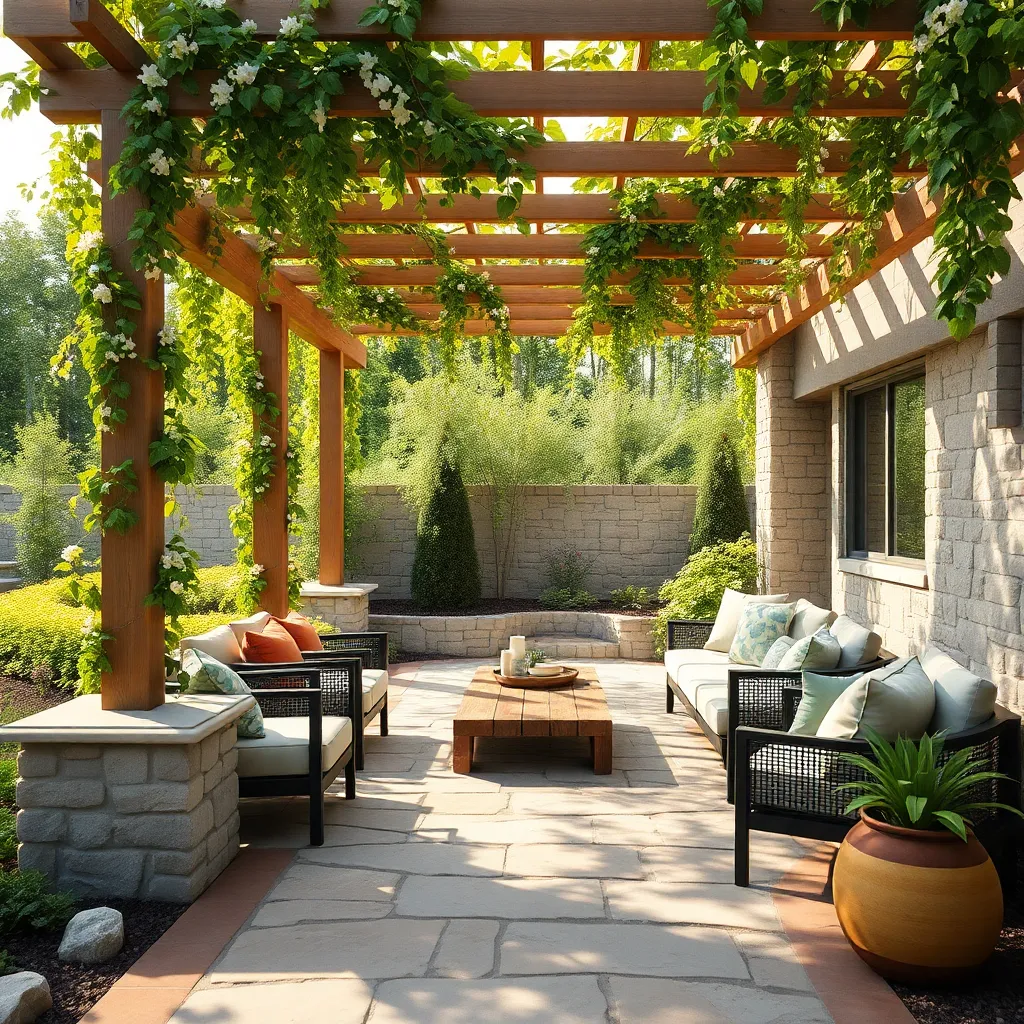
Enhancing your pergola landscape with natural stone pathways can seamlessly integrate your outdoor space with the surrounding environment. Begin by choosing durable stones like bluestone, slate, or granite, which offer both visual appeal and longevity. Start by outlining your desired path using a garden hose or string to easily adjust curves and widths before committing to the layout. For beginners, simply laying the stones on a bed of sand or gravel ensures stability and proper drainage, while more advanced gardeners might consider mortaring stones for a sleek, polished finish.
The versatility of natural stone allows you to create pathways that complement various pergola styles, from rustic to modern. Consider using a mix of larger stepping stones with smaller, irregular pieces to achieve an organic look that invites exploration. To elevate the design, incorporate low-growing ground covers, such as creeping thyme or moss, between the stones to add color and texture. For a more sophisticated touch, landscape lighting can be strategically placed along the edges to enhance both safety and ambiance during evening gatherings. This approach not only beautifies your garden but also provides a practical guide through your outdoor sanctuary.
Install Water Features for Serenity
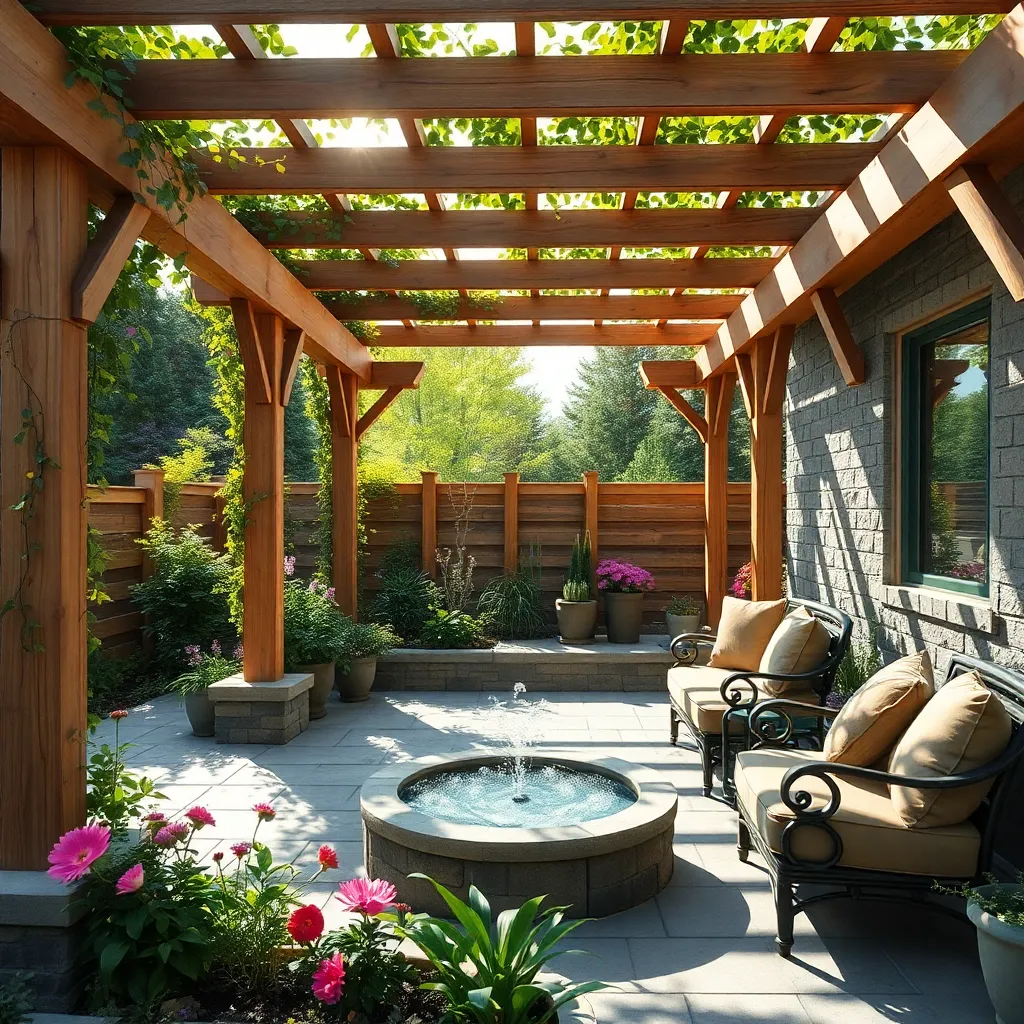
Incorporating water features under or around your pergola can add a layer of tranquility and elegance to your outdoor space. For beginners, consider starting with a simple fountain or a small pond, using materials such as pre-cast concrete or fiberglass that are both durable and easy to install. For those with more experience, a cascading waterfall or a koi pond could serve as a stunning focal point. Ensure proper placement by considering the natural slope of your yard, and use a submersible pump to keep the water circulating, which prevents stagnation and maintains water clarity.
To enhance the serenity effect, integrate elements like aquatic plants or decorative stones around your water feature. Choose plants like water lilies or lotus, which not only beautify but also oxygenate the water, promoting a balanced ecosystem. If you’re looking to create a more sophisticated setup, include underwater lighting to highlight your water feature at night, and opt for solar-powered options to keep energy use eco-friendly. Carefully position seating areas nearby so you can relax and enjoy the soothing sounds of water in your pergola oasis.
Use Container Plants for Flexibility
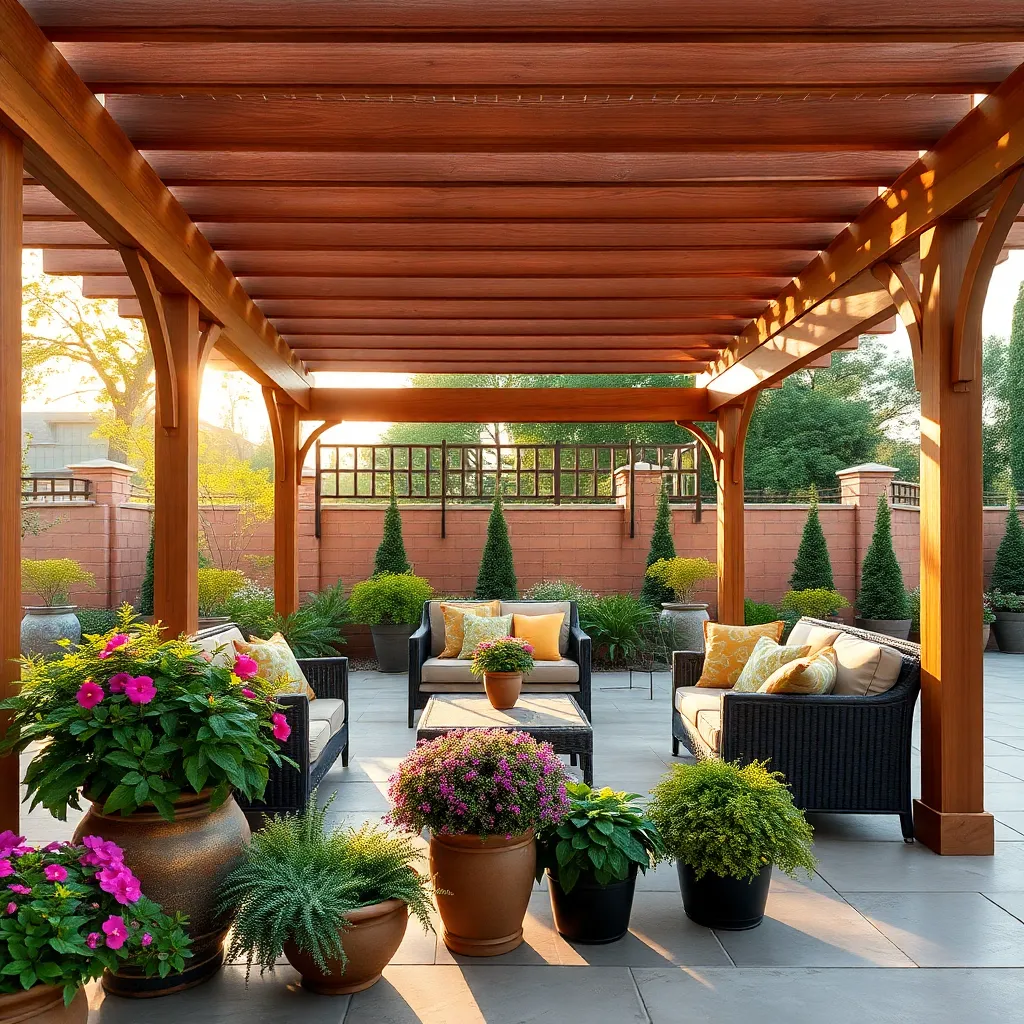
Using container plants around your pergola offers unmatched flexibility and allows you to change your landscape design effortlessly. Consider incorporating a mix of large pots and smaller planters to create varied heights and layers. For beginners, start with easy-care plants like lavender or succulents, which thrive in containers and require minimal maintenance. More experienced gardeners might explore climbing plants like clematis or honeysuckle in large containers with built-in trellises, adding vertical interest and seasonal blooms.
Opt for durable materials for your containers, such as ceramic, fiberglass, or weather-resistant plastic, which can withstand the elements while maintaining their appearance. Ensure the pots have adequate drainage holes to prevent waterlogging and promote healthy root growth. To enhance your pergola’s ambiance, you can periodically rearrange the containers to suit different seasons or occasions, allowing for a dynamic and personalized outdoor space. This approach not only adds color and texture but also gives homeowners the creative freedom to experiment with different plant combinations throughout the year.
Enhance Ambiance with String Lights
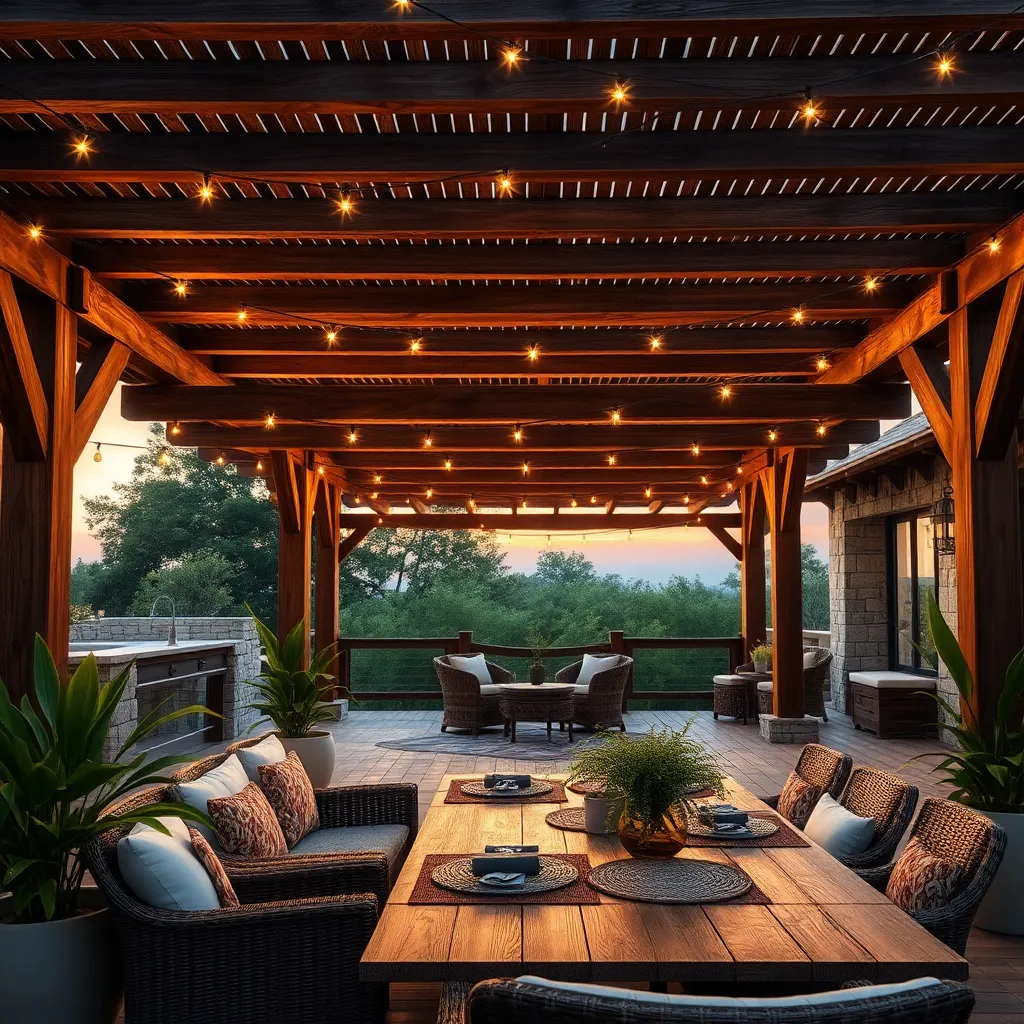
String lights are a simple yet effective way to transform your pergola into a cozy, inviting space. To get started, choose weather-resistant LED string lights, which are both energy-efficient and durable for outdoor use. Begin by securing the lights along the beams or rafters of your pergola using zip ties or small hooks, ensuring they are evenly spaced for a balanced look. For a beginner-friendly setup, opt for a warm white glow that complements any outdoor theme and provides a soft, enchanting ambiance.
For those looking to create a more dynamic atmosphere, consider incorporating lights with dimming capabilities or color-changing options. Layering different lighting types can add depth and interest; for example, combine string lights with lanterns or candles to enhance the mood. When planning your layout, maintain a safe distance between the lights and any flammable materials. For an advanced touch, integrate a smart lighting system that can be controlled via smartphone, allowing you to adjust brightness and colors to suit any occasion. These enhancements not only beautify your outdoor space but also make it more functional for evening gatherings.
Define Edges with Decorative Gravel
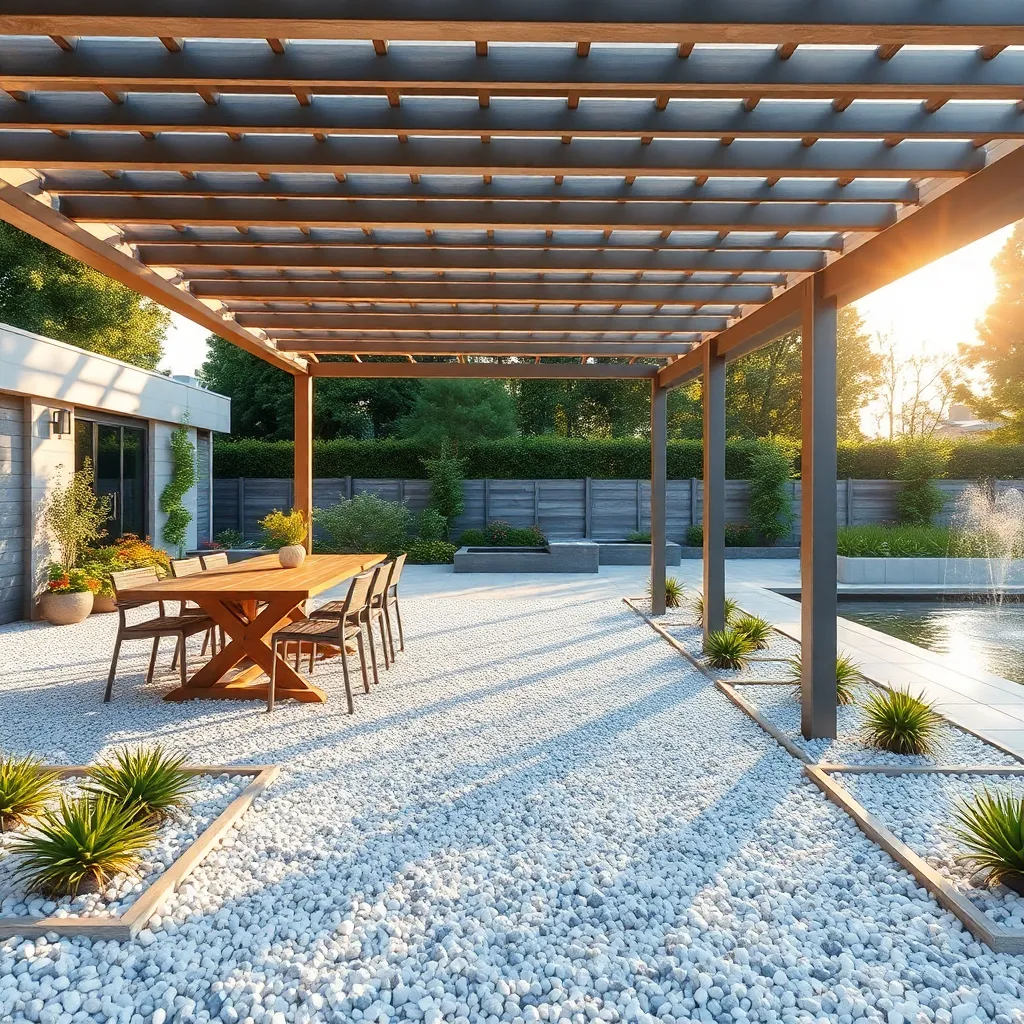
To create a polished and cohesive look around your pergola, define its edges with decorative gravel. This simple yet effective approach not only enhances the visual appeal but also helps with drainage and weed control. Start by selecting a gravel type that complements your outdoor aesthetic—pea gravel is smooth and versatile, while crushed granite offers a more rustic charm. Spread the gravel in a 2-3 inch layer along the pergola perimeter, ensuring it extends at least 6 inches beyond the base for optimal coverage and to prevent weed growth.
Incorporating decorative gravel is a straightforward process that even beginners can tackle with confidence. Use landscape fabric beneath the gravel to further suppress weeds and maintain a neat appearance. Advanced gardeners might opt for edging materials like steel or brick to keep the gravel neatly contained and add a touch of sophistication. Whether you’re aiming for a minimalist look or a lush garden retreat, defining your pergola’s edges with gravel is a practical enhancement that elevates any outdoor space.
Conclusion: Creating Beautiful Outdoor Spaces
As we explored the ‘8 Pergola Landscaping Ideas to Surround Your Outdoor Space,’ we delved into key relationship concepts that emphasize the importance of creating a nurturing environment for growth and connection. We discussed the power of clear communication, the strength found in shared goals, the beauty of celebrating individuality, and the need for adaptability. We also highlighted the value of mutual respect, the nurturing of emotional intimacy, the importance of trust, and the joy of shared experiences.
To bring these concepts to life, take a moment today to envision your relationship as a garden that thrives with care and attention. Choose one idea from the article and implement it within your relationship today—whether it’s planning a shared activity or having an open conversation.
Remember, nurturing your relationship is a continuous journey. Bookmark this article as a valuable resource to revisit these ideas whenever you need a reminder or a boost.
By actively engaging with these concepts, you’re not only enhancing your current relationship but also paving the way for long-term success and fulfillment. Embrace this opportunity to grow together and watch as your relationship flourishes.

